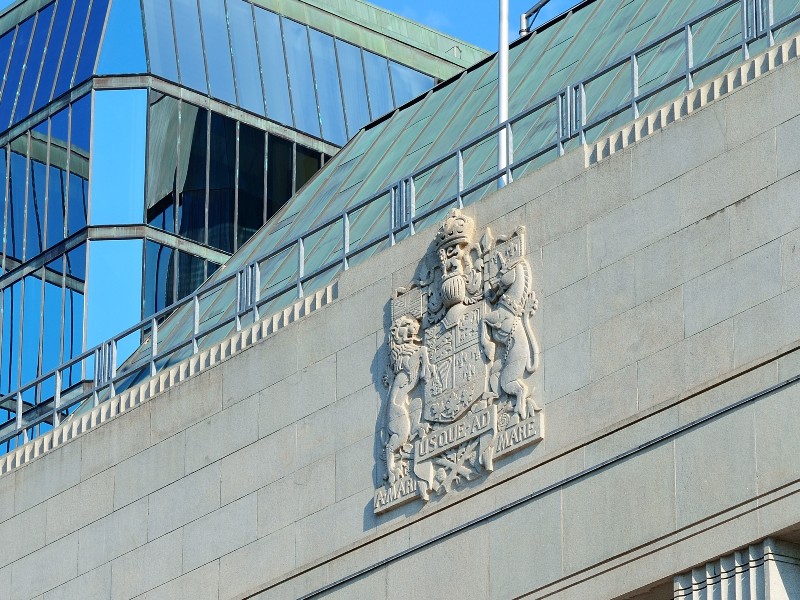
The Bank of Canada’s latest review of business and consumer expectations has revealed how widespread uncertainty is muting rehiring and purchasing plans, published days before a federal update gives the Liberals’ outlook for the economy.
The central bank’s business outlook survey suggested about half of firms foresee a rebound in their sales within the next year as the coronavirus’ effects recede, but the expectations of a return to pre-pandemic levels often depend on lifting government-mandated restrictions.
The survey report published Monday suggests many service-sector and energy companies don’t expect a return to pre-pandemic employment levels.
The worry among workers about losing their jobs rose to the highest level seen in the bank’s regular survey of consumer expectations, released alongside the business outlook report.
Workers’ expectations of how easily they could find new work dropped to the lowest level in the survey since the 2015 oil-price shock as the country faces a different and far deeper economic crisis.
Lockdowns and stay-at-home requests from governments put the economy in a deep freeze in mid-March, with the thaw beginning in recent weeks as restrictions began to be rolled back.
Nearly half of all businesses reported an outright decline of their sales in the past 12 months because of the coronavirus, low energy prices and the uncertainty both wrought.
More than half of businesses expect their total sales over the next 12 months to be lower than they were in the last year, with future sales indicators at record lows.
About half of firms expect their sales will “mostly recover” within the next year as the coronavirus’ effects recede, but the expectations of a return to pre-pandemic levels often depend on lifting government-mandated restrictions. Some companies said they could get back to normal operations within a month of public health restrictions being lifted.
“Overall, while the economy is on the mend, it’s still early days and both businesses and consumers will continue to grapple with uncertainty over the foreseeable future,” TD economist Ksenia Bushmeneva, said in a note.
“This will manifest in lower spending by households and weak investment plans by businesses, both of which will weigh on the pace of economic recovery.”
Consumers’ expectations for wage growth were below what they anticipated for inflation, while the outlook for growth in household income dropped to its lowest level in the survey’s history.
The consumer survey said spending expectations have tumbled, which the bank says suggests consumers have become more cautious due to the economic impact and health risks related to the pandemic.
The bank said consumers expect to spend mostly on essentials and less on durable goods like cars and furniture, as well services that involve face-to-face interactions like eating out, travel or going to the movies.
A Royal Bank report Monday estimated the drop in economic output and sharp rise in spending could put the federal deficit at $265 billion this fiscal year.
The report said deficits could be close to double those the Liberals predicted just over six months ago as revenues drop — not including an expected need to spend more to help the economy recover.
“If they needed to extend some of the (aid) programs to ensure that the economy wasn’t going to be … more meaningfully impacted, they’re in the fiscal position to do so,” said RBC economist Colin Guldimann, who co-wrote the report.
“Of course, there is a position when some spending becomes too much spending and it’s really hard to know where that is.”
Federal spending on fighting the pandemic and its effects, by the government’s most recent figures, amounts to about $174 billion.
About one-third of service and energy companies told the Bank of Canada they have tapped a federal wage subsidy to reduce or avoid layoffs. Other firms looking to rehire or hire new staff cited an emergency federal benefit for workers as a hurdle to their plans.
The latest figures from the federal government show the $45-billion wage subsidy program has paid nearly $17.1 billion to 245,160 companies as of June 29. Meanwhile, the Canada Emergency Response Benefit, or CERB, has paid $53.53 billion in benefits to 8.16 million people as of June 28, since it was introduced in late March.
David Macdonald, senior economist at the Canadian Centre for Policy Alternatives, argued in a research note Monday that the Liberals shouldn’t make deep cuts to their aid measures.
He calculated that households will have a surplus in their budgets by $202.9 billion due to Ottawa’s deficit spending, while corporations would see a surplus to the tune of $37.1 billion.
“As federal deficits can create surpluses in other areas, the opposite is also true,” Macdonald wrote. “Federal surpluses, through cutbacks and austerity, must force another sector into deficit by the same amount.”
